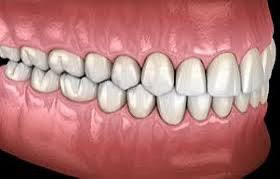
The Science of Dental Occlusion: Understanding Bite Alignment and Correction
Share
Occlusion, the way teeth align when the jaw closes, plays a vital role in oral health and function. A properly balanced bite supports healthy teeth, muscles, and temporomandibular joints (TMJ), while an unbalanced bite can lead to discomfort, tooth damage, and even chronic pain. Whether you're a dental student or a professional, developing expertise in occlusion is essential for providing top-tier care to patients.
This guide explores the importance of occlusion, how bite irregularities impact overall health, and the most effective diagnostic and corrective techniques.
Why Occlusion Matters in Dentistry
Occlusion isn't just about how teeth fit together—it involves the intricate coordination of the jaw, muscles, and supporting structures. A well-balanced bite distributes pressure evenly across the teeth, preventing excessive wear and reducing strain on the jaw.
Types of Occlusion
-
Ideal Occlusion – A perfectly aligned bite where teeth and jaw function harmoniously. Though rare, it serves as a benchmark for evaluating malocclusion.
-
Malocclusion – Any misalignment of the bite, including overbite, underbite, crossbite, or crowding. If left unaddressed, it can contribute to dental and muscular issues.
Key Benefits of a Proper Bite
✅ Prevents Tooth Damage – Uneven bite pressure can cause excessive wear, fractures, and enamel erosion.
✅ Protects TMJ Health – Balanced occlusion minimizes strain on the temporomandibular joints, reducing the risk of TMJ disorders.
✅ Enhances Muscle Efficiency – Proper alignment prevents unnecessary tension and fatigue in the jaw and facial muscles.
How to Assess a Patient’s Bite
A thorough occlusal evaluation is crucial for diagnosing bite-related problems. Several techniques help dental professionals analyze occlusion with precision:
🦷 Articulating Paper – Leaves visible marks on the teeth to indicate points of contact and pressure distribution.
🦷 Occlusal Indicators – Special films that highlight uneven bite forces for more detailed assessments.
🦷 T-Scan Technology – A digital system that provides real-time bite force data, helping pinpoint imbalances.
🦷 Mounted Study Models – Plaster models of a patient’s teeth used to evaluate occlusion outside the mouth, particularly for complex cases.
Techniques to Correct Occlusion Issues
Once occlusal imbalances are identified, various methods can be used to restore harmony:
🔹 Selective Reshaping – Carefully adjusting enamel surfaces to eliminate high-pressure areas and improve bite alignment.
🔹 Occlusal Equilibration – A systematic reshaping of multiple teeth to balance bite forces.
🔹 Orthodontic Solutions – Braces or clear aligners gradually reposition misaligned teeth for long-term occlusal stability.
🔹 Restorative Dentistry – Crowns, veneers, and other restorations rebuild damaged teeth to optimize function.
🔹 Occlusal Splints – Custom night guards help patients with bruxism or TMJ disorders by preventing excessive clenching and grinding.
The Link Between Occlusion and Overall Well-Being
Beyond dental health, occlusion has a significant impact on a patient’s overall quality of life:
🔸 Headaches & Facial Pain – Bite misalignment can cause chronic headaches and facial muscle tension.
🔸 Neck & Shoulder Discomfort – The jaw is connected to the neck and shoulders, meaning occlusal problems can contribute to muscular pain.
🔸 Sleep & Breathing Issues – Malocclusion may affect airway function, potentially leading to conditions like sleep apnea.
Achieve Mastery in Occlusion & Elevate Your Dental Knowledge
Mastering occlusion is a critical skill for any dental professional striving to deliver high-quality patient care. Understanding bite dynamics, using advanced diagnostic tools, and applying the right correction techniques can prevent a wide range of dental and systemic health problems.
📖 Want to deepen your understanding and ace your dental exams? Our Dental Focus Study Guide (📍dentalprobundle.com) provides comprehensive notes covering occlusion, orthodontics, prosthodontics, and more—over 1,500 pages of expert-curated content to help you succeed in your studies and clinical practice.
🎯 Get your copy today and take your dental knowledge to the next level!